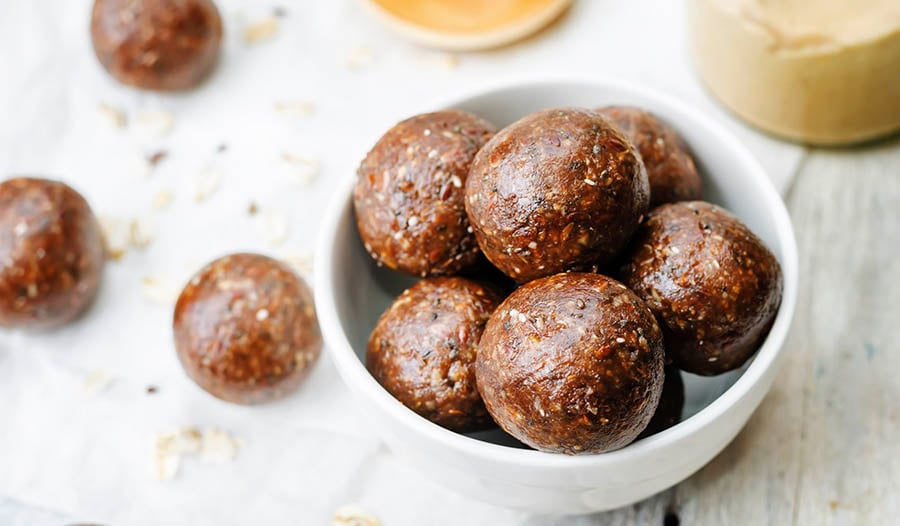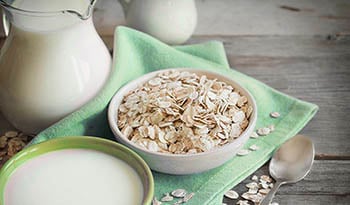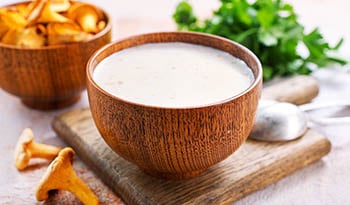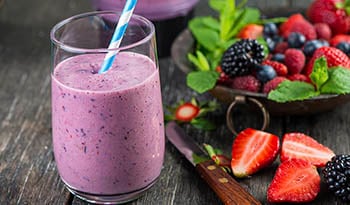What is Monk Fruit? + Healthy Monk Fruit recipes
FERAGAT:Bu blog tanı koymayı hedeflememektedir...
- Bu makalede:
- What Is Monk Fruit Sweetener?
- Are There Benefits to Using Monk Fruit?
- How Is Monk Fruit Sweetener Used in Cooking?
- Flourless Raspberry and Chocolate Monk Fruit Cake
- Fudgy Monk Fruit and Almond Fat Bombs
- Gluten-Free Chocolate Chip Monk Fruit Cookies

A growing trend in the health food world is the use of monk fruit. This is a small, green fruit that's also known by the name of Luo Han Guo or Siraitia Grosvenorii. It has a sweet and mild flavor that becomes even more concentrated when the fruit is juiced. However, most of the fitness blog writers and health food gurus discussing monk fruit are not necessarily using the raw fruit. Instead, they prefer to get the benefits from dried monk fruit or other forms.
What Is Monk Fruit Sweetener?
Monk fruit is renowned for its sweet flavor in the Chinese and Thai regions that are its native home. It turns out that monk fruit is so tasty because it has 100 to 250 times the level of sweetness of a similar amount of sugar. The fruit gets its unusually high level of sweetness from mogrosides, a type of naturally occurring chemical compound that tastes sugary without having a lot of calories.
To make sweeteners that are easy to use, the monk fruit is picked and slowly ripened. The bitter peel and seeds are then removed before the fruit is concentrated into a juicy puree that can be dried or processed into sweeteners that have a texture similar to normal sugar.
Are There Benefits to Using Monk Fruit?
The primary benefit of monk fruit is that it is sweet but has no calories. Keep in mind that certain sweeteners may add items with calories to improve the flavor and texture of the sweetener. However, even the monk fruit sweeteners with calories still tend to be significantly lighter than actual sugar. This allows people to enjoy sweet flavors while still monitoring their calories and maintaining a healthy weight.
Monk fruit is particularly helpful for diabetics. Even though the fruit is sweet, it does not have an effect on blood sugar. This allows people with glucose metabolism issues to enjoy sweet treats without getting blood sugar spikes. The fruit also has quite a few benefits compared to other types of sweeteners. Unlike stevia, monk fruit does not cause bloating or gas. It is also less processed than aspartame and other artificial sweeteners.
How Is Monk Fruit Sweetener Used in Cooking?
Monk fruit sweeteners can be used exactly like sugar in any recipe. Cooks can substitute an equal amount of monk fruit sweetener for refined sugar. Furthermore, it will dissolve and blend just as well as sugar. The sweetener does particularly well in recipes with a soft texture and a rich flavor. The following are a few recipes that highlight the versatility of monk fruit.
Flourless Raspberry and Chocolate Monk Fruit Cake
Flourless chocolate cake is a favorite recipe even for those who are not gluten-free because it has a rich, pudding-like texture. This tasty version increases the flavor even more by creating a fresh raspberry sauce to pour on top of the cake.
Ingredients:
- 1 Tbs. coconut oil
- 12 ounces chopped bittersweet chocolate
- 12 Tbs. unsalted butter
- 1 Tbs. espresso powder
- 1/4 tsp. salt
- 6 eggs
- 1 1/2 cup monk fruit sweetener plus 2 Tbs. monk fruit sweetener
- 12 ounces frozen or fresh raspberries
Instructions:
- Preheat the oven to 325 degrees Fahrenheit. Prepare a 9-inch springform pan by wrapping the exterior with foil and oiling the interior with the coconut oil.
- Place the chocolate, butter, espresso powder, and salt in a microwave-safe bowl.
- Melt the ingredients in the bowl by microwaving for 30 seconds, stirring, and repeating until melted. Set aside to cool.
- Place the eggs and monk fruit sweetener in a large mixing bowl and whip for about 10 minutes until eggs look light-yellow and thick.
- Gradually add the chocolate mixture to the egg mixture, stirring continuously.
- Put the batter in the springform pan and place in the oven.
- Cook until a toothpick inserted in the cake looks wet but not sticky. This will take 45 to 55 minutes.
- While the cake cooks, prepare a raspberry sauce by combining berries and 2 tablespoons of monk fruit sweetener in a pan over medium-high heat. Simmer it steadily until the berries break down and the sauce is thick. This will take 10 to 15 minutes. If desired, strain seeds out of the sauce before setting aside until the cake finishes.
- Remove the cake from the oven and let it cool.
- Take the cake out of the springform pan, slice into servings, and top each slice with a spoonful of sauce.
Fudgy Monk Fruit and Almond Fat Bombs
Fat bombs are a favorite snack of people on the ketogenic diet. They combine healthy forms of fat with some tasty flavorings to create a little treat that satisfies dessert cravings without wrecking a person's diet. This recipe combines the flavors of chocolate, almond butter, and monk fruit to create something truly delicious. It is ketogenic, paleo-friendly, low-carb, vegan, and free of grain, gluten, dairy, and sugar. Therefore, it is quite healthy.
Ingredients:
- 1 cup room-temperature coconut oil
- 1 cup almond butter
- 2 Tbs. monk fruit sweetener
- 1/3 cup coconut flour
- 1/2 cup cocoa powder
- 1/4 tsp. pink Himalayan salt
Instructions:
- Combine the coconut oil and almond butter and heat until melted with either a stove or a microwave.
- Stir the oil and butter together until thoroughly blended and remove from the stove.
- Mix in the monk fruit, coconut flour, cocoa powder, and salt.
- Put the mixture in the freezer for 90 minutes until a solid yet slightly moldable dough forms.
- Divide the mixture into two tablespoon portions and roll each portion into a ball.
- Put the balls on a flat tray and freeze the balls for 15 more minutes.
- Refrigerate until ready to serve.
- Serve and enjoy.
Gluten-Free Chocolate Chip Monk Fruit Cookies
People craving chocolate chip cookies do not have to give in and eat an unhealthy cookie loaded with processed junk. As long as the right ingredients are used, a chocolate chip cookie can be a reasonably healthy treat. This recipe uses a combination of almond flour, dark chocolate, and monk fruit sweetener to create delicious cookies that even those not on a diet will love.
Ingredients:
- 1/3 cup monk fruit sweetener
- 2 cups almond flour
- 1/4 tsp. Himalayan salt
- 1/2 tsp. baking soda
- 1/2 cup ghee or butter
- 1 beaten egg
- 1 Tbs. vanilla extract
- 1 cup dark chocolate chips
Instructions:
- Preheat the oven to 350 degrees Fahrenheit and line a baking tray with parchment paper.
- Combine monk fruit, almond flour, salt, and baking soda in a food processor and pulse the mixture a few times to blend it.
- Add butter to the mixture and pulse until it resembles coarse crumbs.
- Transfer to a large bowl and stir in the beaten egg and vanilla until a wet dough forms.
- Fold the chocolate chips in gently.
- Roll the dough into 1-inch balls. There should be enough dough for roughly 14 to 16 cookies.
- Place dough balls on baking sheet, leaving at least 1 inch between them. Do not flatten the balls because they will flatten naturally as they bake.
- Cook until brown. This will take roughly 13 minutes.
- Allow cooling for 10 minutes.
- Store the cookies in an airtight container until ready to serve.
- Serve and enjoy.

 Kaynak: Dr. Michael Murray, N.D.
Kaynak: Dr. Michael Murray, N.D. 


